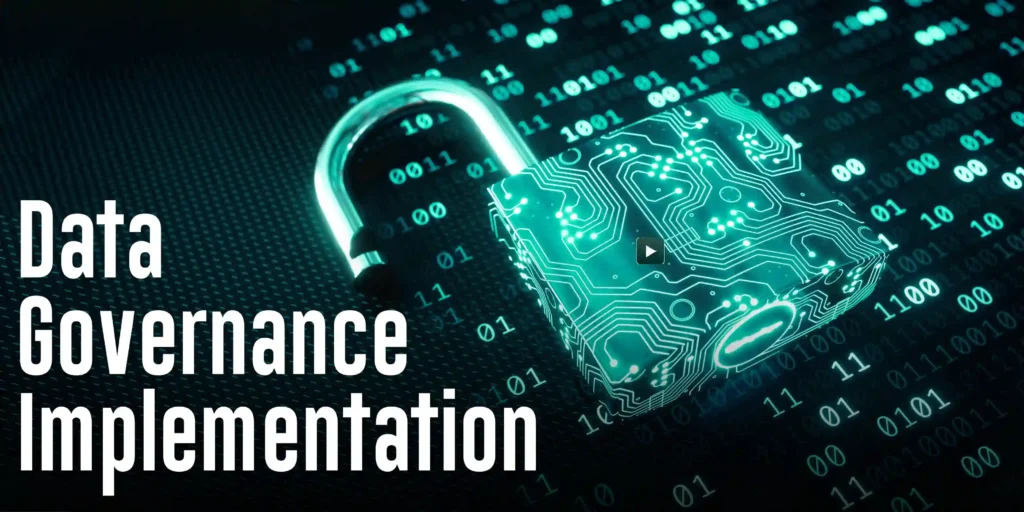Businesses depend heavily on data in today’s data-driven environment to enhance operations, make wise decisions, and get an edge over their competitors. However, there are a lot of issues with quality, security, and compliance because of the huge amount of data that businesses produce and consume.
Below is the role of data governance. To guarantee data integrity, quality, and regulatory compliance, a strong data architecture must be put in place. We will discuss the essential components of implementing data and its significance in ensuring data quality and compliance in this blog article.
What is Data Governance?
The procedures, instructions, standards, and measurements that ensure an organization’s data is used safely and effectively are known as data governance. It involves monitoring data availability, usefulness, integrity, and security to make sure it fulfills legal and organizational requirements. Data management, data privacy, data security, and data quality management are just a few of the many tasks that fall under the general heading of data.

Why is Data Governance Important?
Effective data governance is crucial for several reasons:
Data quality: For reliable business decisions to be made, data must be accurate, full, and consistent. Accurate conclusions, resource wastage, and missed opportunities can result from poor data quality.
Compliance: Entities must be bound by many laws and regulations, including industry-specific rules, the California Consumer Privacy Act (CCPA), and the General Data Protection Regulation (GDPR). Data creates rules and controls to protect sensitive data and helps in ensuring compliance.
Risk management: Maintaining proper data governance reduces the likelihood of data loss, unauthorized usage, and breaches. It provides responsible and secure data handling.
Operational Efficiency: Data management procedures are improved by an effective data governance structure, which reduces duplicates and wastage. Better resource use and cost reductions result from this.
Trust and Accountability: Data develops a transparent and accountable culture that improves relationships with partners, customers, and staff.
Key Components of Data Governance Implementation
Data governance implementation includes many key components, each of which enhances the framework’s overall efficacy. The following are the key factors to think about:
1. Framework for Data Governance
An organization’s procedures, standards, and structure for handling data are explained in a data framework. It defines norms for data consumption, develops standards for data management, and defines roles and duties. The framework should be adaptable enough to change with the demands of the company and should be in line with its aims and objectives.
2. The Care of Data
The process of selecting teams or individuals to manage and supervise data assets is known as data management. Data managers verify that information is reliable, consistent, and applied correctly. They are important in carrying out data governance procedures and solving problems with data.
3. Management of Data Quality
Ensuring that data satisfies specified quality criteria is the main goal of data quality management. This calls for steps like data enrichment, data validation, and data cleansing. By bringing data quality management techniques into practice, data reliability is increased by locating and resolving data quality problems.
4. Security and Privacy of Data
A key element of data is to protect sensitive information. By putting in place data privacy and security measures, data is protected from misuse, illegal access, and leaks. This involves frequent security assessments, access limitations, and encryption.
5. Standards and Policies for Data
Consistent data management procedures within the company depend on the establishment of data policies and standards. While data standards provide the formats, definitions, and classifications for data, data policies set out the guidelines for data access, usage, and sharing. It is necessary to document these guidelines and standards and inform all pertinent parties of them.
6. Committee on Data Governance
A cross-functional group called a data committee is in charge of managing the data governance initiative. Members of the group come from a variety of areas, including business units, legal, IT, and compliance. The committee’s responsibilities include overseeing the application of data guidelines, providing strategic guidance, and resolving any data-related problems.
Steps for Implementing Data Governance
Ensuring that all facets of data management are taken care of requires a methodical approach when implementing data governance. These are what you need to think about:
1. Evaluate the Present Situation
Start by looking at how your company is currently managing its data. Identify the gaps in compliance, data quality problems, and current data governance procedures. You can concentrate your efforts and identify the areas that require improvement with the aid of this assessment.
2. Establish Objectives and Goals
Establish specific goals and objectives for your data governance initiative. These objectives must address certain data management issues and be in line with your company’s overarching strategy. Your objectives can be, for instance, to increase data security, ensure regulatory compliance, and improve data quality.
3. Create a Framework for Data Governance
Make a thorough data framework that describes the organization, duties, and roles involved in data management. Establish guidelines, standards, and procedures for data governance. Make sure the framework is flexible enough to take into account expansion and future adjustments.
4. Assign Accountabilities and Roles
Assign teams or individuals inside your organization tasks and responsibilities related to data governance. Members of the data committee, data owners, and data managers fall under this category. Give them the resources and training they need to support their jobs, and clearly outline their obligations.
FAQS
Data governance is essential for ensuring data quality, consistency, and security. It helps organizations comply with regulations, make informed decisions, protect sensitive information, and enhance operational efficiency by establishing clear policies and responsibilities for data management.
Data governance refers to the processes, policies, standards, and metrics that ensure the effective and efficient use of data within an organization. It involves managing the availability, usability, integrity, and security of data to ensure that it meets the organization’s requirements and regulatory standards.
A data governance framework outlines the structure, policies, and procedures for managing data within an organization. It defines roles and responsibilities, sets data management standards, and establishes guidelines for data usage.
Conclusion
In today’s data-driven world, putting in place a strong data governance framework is important for guaranteeing data quality and compliance. Organizations can handle their data assets and reduce risks by implementing data quality management and security procedures, assigning roles and duties, and creating clear policies. In addition to improving operational effectiveness, a well-executed data program promotes accountability and confidence among stakeholders. Investing in data is more necessary than ever because data still plays an important part in business decision-making.
